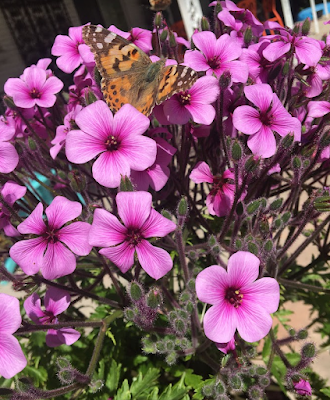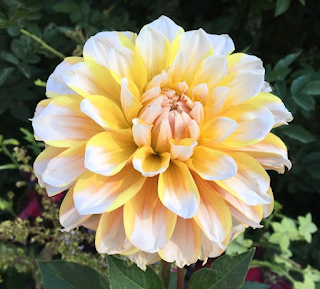Across much of the state, fall is in the air. First frosts have come and gone in the mountains; here on the Front Range we have a few weeks left before our average “end of tender annuals.” I am content to let most of these flashy fillers die, but some, like succulents, semi-hardy trees or shrubs, and tender bulbs and tubers are worth the effort to try to preserve year after year. These are plants which improve with size—becoming truly show-stopping only after years of cultivation. Who hasn’t admired an enormous Colocasia, prize Dahlia, or bulging Aloe? The only trick is that unlike gardeners in more temperate climes, you will have to invest some energy in keeping such plants alive to impress again next year.
With the exception of true tropical plants, many bulbs and tender plants used as annuals in Colorado still require a cool dormancy—a winter of sorts. Just not a Colorado winter. So the trick to keeping them for use next year is to provide the conditions of a dormant season from their native range—sometimes this is cool and damp, sometimes cool and dry, and sometimes merely dry.
 |
| Geranium maderense will only flower after a "cool" winter. |
The first step is to evaluate what plants will require extra effort to be saved. Anything in a container is a must—the exposure above ground is too much for even some normally hardy plants. Tender plants and bulbs tucked into in-ground beds will likely require digging, but a plant that is at the edge of its hardiness might surprise you in the right microclimate—some Dahlias planted deeply and tucked against the foundation on the south side of the house, for example, might pull through. Without microclimate magic, though, and for real treasures, moving to storage is safer! For bulbs and tubers, dig after the tops of the plants have been killed by frost. Be extremely careful to avoid damaging the storage organ in the process; any wound is a site for decay to develop. Clean off excess soil and dry them in the shade (or indoors) for a few days to allow them to cure. Then it is time for storage. For successful winter storage, aim for 35 - 50 degrees F. If you have root cellar, they were designed for this. Garages that stay above freezing work, and even a refrigerator can work too (agreeing my wife and children on the exact ratio of ornamental plants to actual food at my house is a work in progress). Bulbs and tubers need to be kept from drying out; it seems that nearly as many techniques for this exist as gardeners. Commonly, things like Dahlias, Colocasias, and Caladiums are stored in plastic bins, loosely packed in a dampened medium, like sawdust, shavings, or even shredded paper. Check on them a couple of times a month and remove any that are beginning to rot. Keep them in the dark (remember that we’re pretending they’re in their natural habitat, underground) to prevent them from sprouting in storage.
Succulent plants, in contrast to bulbs and tubers, need to be stored somewhere where they will get ample light. My garage is perfect for this, as it has a convenient window. The cooler your storage location for most succulents, the more important it is that they stay absolutely dry through the winter. Wet roots will translate easily into rot if it’s cool. If you need to disassemble a container for storage or plan on dividing any succulents, make sure to do it before it becomes too cool in your storage area, or keep the plants someplace warm for a while before moving them to their overwintering location—they need time to heal any root damage from re-potting to help defend against rot. "Curing" the plants out of soil for a couple of days can be very helpful too. Don’t overwater them!
 |
| Time to divide this container's contents! |
Keep a careful eye out for pests through the winter, particularly aphids. If any come into storage with the plants, their population can grow quickly in the absence of natural enemies. Scout your plants frequently and deal with any pests you find—early action will save you a lot of pain and heartache later in the winter.
When summer returns and nighttime temperatures are above freezing, plants can be returned to their outdoor displays. For plants in the ground, be sure not to plant them in too-cold soil, as this can rot them right at the finish line! For succulents or tender plants, be sure to gradually acclimate them to direct sunlight.
Just thinking about all that makes part of me want just to let all those darn plants freeze this year. But I know I’ll relent. I have an Aloe vera that badly needs dividing, and aloe divisions make great Christmas gifts!


No comments:
Post a Comment